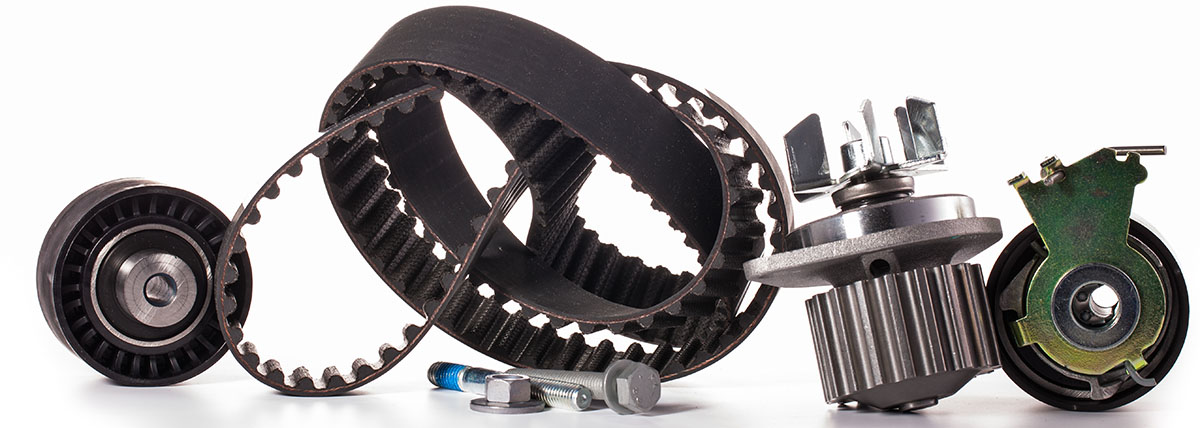Phoenix Timing Belt Repair with Perez Auto Repair
Not everyone knows what a timing belt is until it’s too late, which is not a good thing if you get stuck outside in the Phoenix heat. The timing belt connects the engine’s camshaft and crankshaft, and ensures that they maintain proper timing to keep the engine running smoothly. In essence, it is keeping the top half of your engine (valves) synced to the bottom half (crankshaft). If your car is 15 years old or older, it most likely has a timing belt. Some new cars, such as Audi and Honda, still use timing belts in their engines, but several manufacturers have switched to metal timing chains that are supposed to last as long as the engine. The surest way to determine if your car has a timing belt or not is to refer to the maintenance schedule in your owner’s manual. If there is no listing for timing belt service, your engine has a timing chain. If you are still unsure about your timing belt or chain stop into Perez Auto Repair and our friendly Service Advisors can get you the proper information.
A timing belt snapping can be catastrophic to your car’s engine. There are two types of engine timing configurations that employ timing belts: interference and non-interference. An interference engine means that the valve’s stroke and piston’s stroke occupy the same space in the cylinder at different times, so the timing belt keeps them from colliding with each other. If the timing belt snaps, the cylinder and valves will most likely hit each other, which most commonly causes bent valves but can also result in cylinder head or camshaft damage, and possibly piston and cylinder wall damage. It is possible to get lucky and not suffer any damage from a snapped timing belt on an interference engine, but very unlikely. On a non-interference engine, pistons and valves never occupy the same space, so if the timing belt snaps, no valve or cylinder damage should occur, and theoretically, replacing the broken timing belt will revert your engine to normal function.
How does the timing belt work?
The teeth on the belt mesh with the crankshaft timing gear and camshaft timing gear. The belt is held tight by a tensioner to ensure the belt doesn’t skip a tooth, or “jump time.” The timing belt may turn an additional gear for the water pump.
What are the symptoms related to a bad timing belt?
Most timing belts will need to be replaced as part of regular maintenance every 60,000 to 100,000 miles, and most related problems are caused by not replacing it when you’re supposed to.
If the timing belt is starting to go bad, the engine will run poorly and the check engine light will likely come on. If the belt breaks, the engine will stall immediately, and internal engine damage can occur.
Can I drive with a timing belt problem?
If your car or truck is showing signs of a bad timing belt, don’t drive it. Doing so can quickly result in complete engine failure. If the timing belt has already broken, the engine will not start.
How often do timing belts need to be replaced?
Timing belts are replaced as part of scheduled maintenance, usually every 60,000 to 100,000 miles. Timing belts can fail before that interval is reached, but most vehicles will never have a problem with this part.
If a technician notices signs of premature wear during an earlier inspection, the timing belt should be replaced early.
If you have additional questions regarding timing belt repair or any other concerns regarding your vehicle contact Perez Auto Repair online via phone 602-269-3576 or stop into our facility located at 429 S. 35th Ave, Phoenix, AZ 85009.


